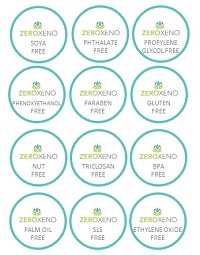Pets/Wildlife
Parabens Used in Cat & Dog Food
In a 2018 study, researchers found dry pet food contained higher levels of parabens than wet food and that cat food used more of the hormone disruptor than dog food.
Estrogenic Laundry Soap
A peer reviewed study reveals 4-nonylphenol, a surfactant used in laundry soap, has estrogenic effects on fish.
Male Vertebrate Wildlife Under Attack By Chemical Estrogens
A full comprehensive report by CHEMtrust on the negative reproductive health effects of male vertebrate wildlife exposed to chemical hormone disruptors.
Hormone Disrupting Chemicals Linked to Reproductive Issues in Male Otters
A report from CHEMTrust on chemicals linked to decrease in the otters penis bone, undescended testicles and an increase in cysts on reproductive tubes.
Intersexed Fish Found in Three Pennsylvania Rivers linked to Endocrine Disrupting Chemicals
A study led by the U.S. Geological Service (USGS) finds intersex fish in three watersheds of Pennsylvania and shows strong connections between these occurrences and increased pollution in waterways from endocrine-disrupting chemicals.
Hormone Disruptors Linked To Genital Changes and Sexual Preference
A Living on Earth transcript on how endocrine disruptors are feminizing frogs and other amphibians.
Canine Toys and Training Devices as Sources of Exposure to Phthalates and Bisphenol A: Quantitation of Chemicals in Leachate and in Vitro Screening For Endocrine Activity
A PubMed abstract on the estrogenic activity of toys and training devices mouthed by dogs as potential sources of exposure to endocrine disrupting chemicals in pet dogs.
High Prevalence of Proposed Müllerian Duct Remnant Cysts on the Spermatic Duct in Wild Eurasian Otters From Sweden
A PLOS abstract on numerous endocrine disrupting chemicals found in the environment that may be causing cysts to develop in otters in Sweden.



